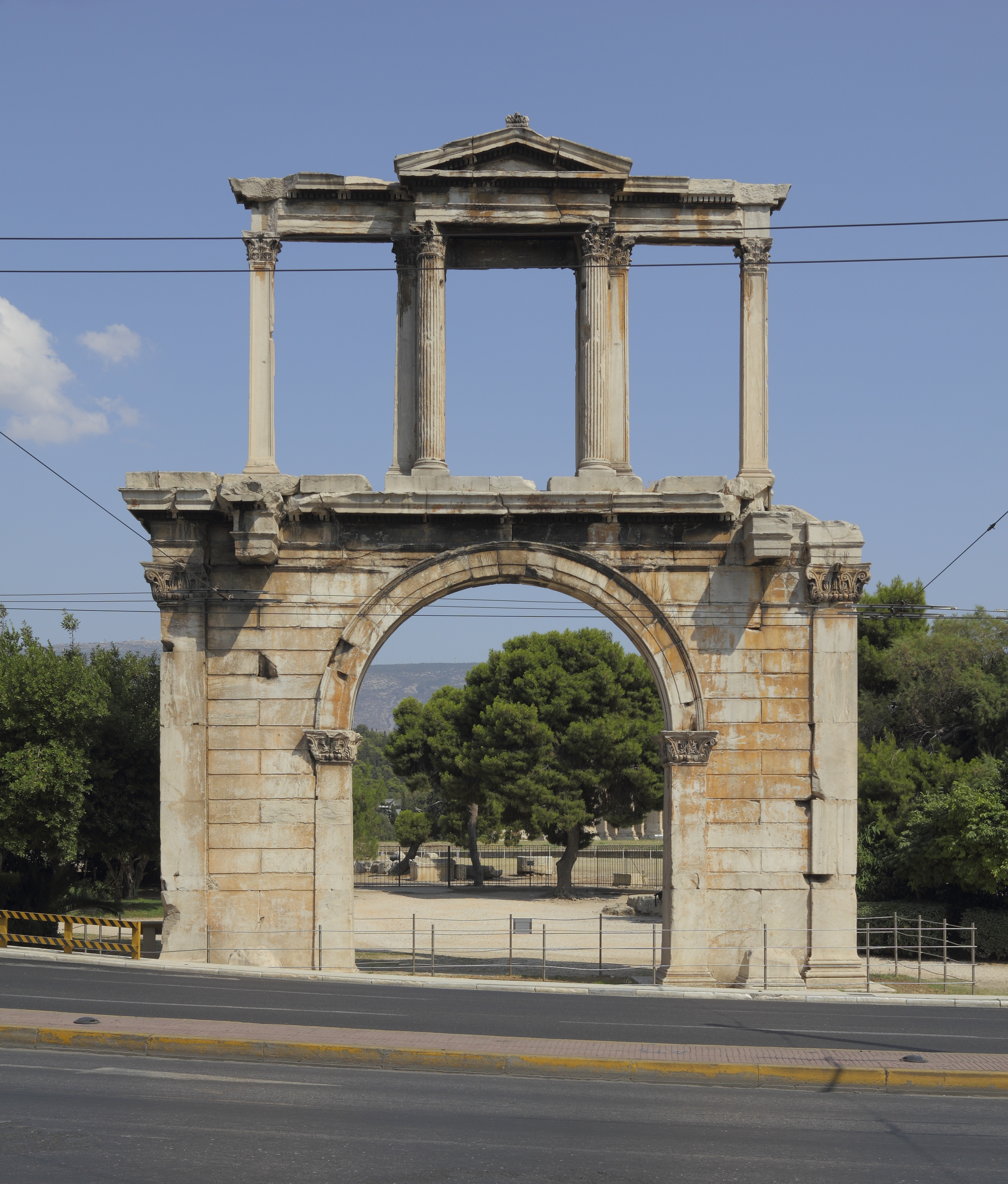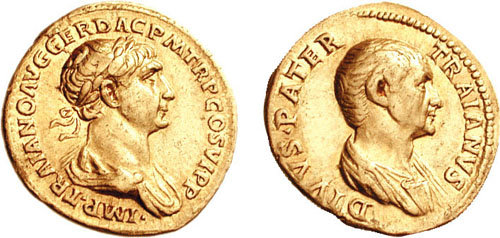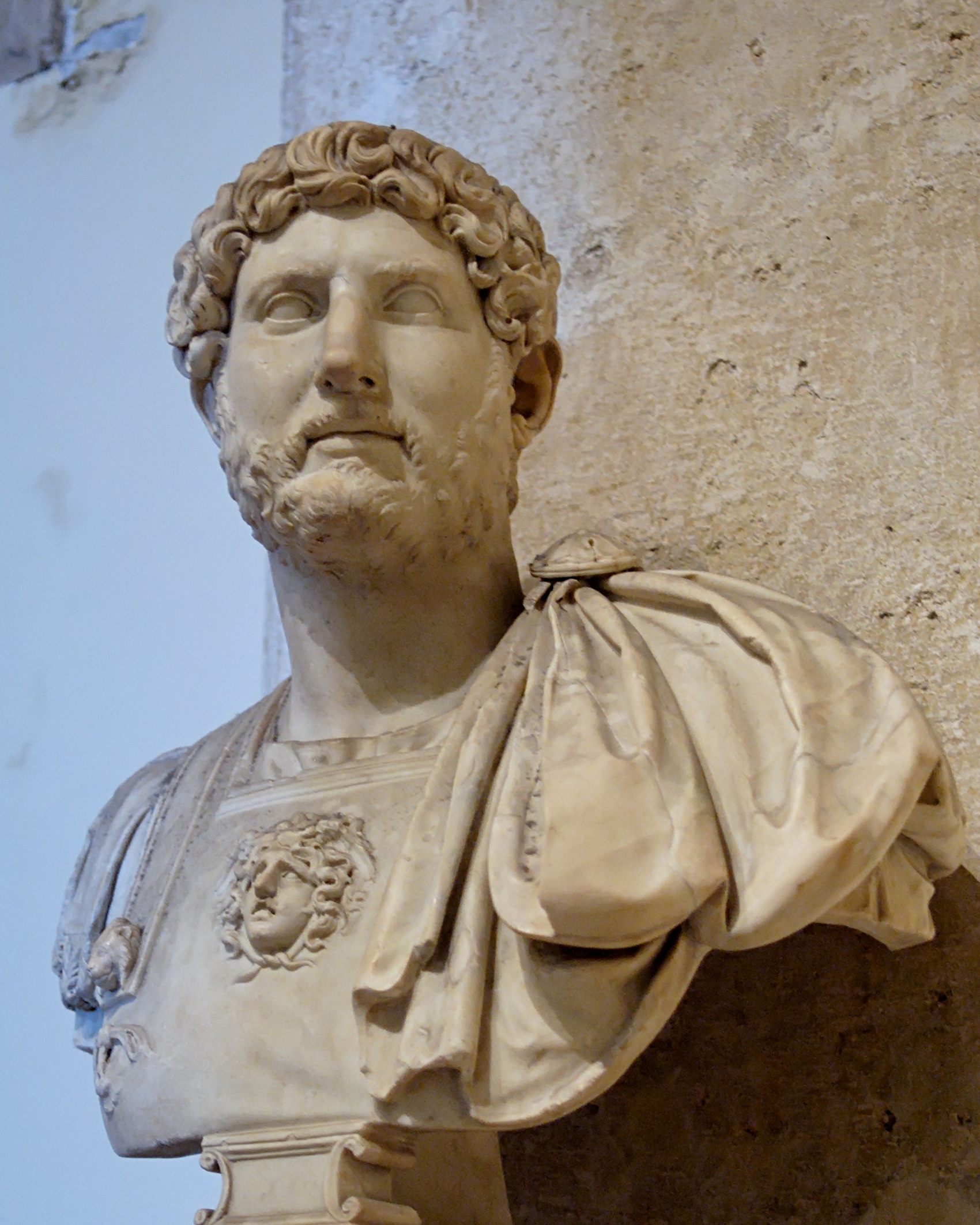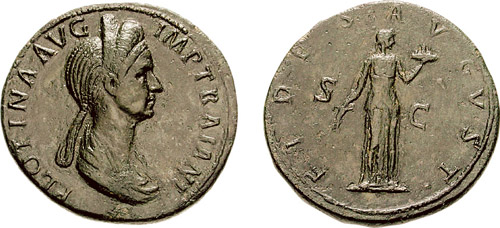|
Hadrian
Hadrian ( ; ; 24 January 76 – 10 July 138) was Roman emperor from 117 to 138. Hadrian was born in Italica, close to modern Seville in Spain, an Italic peoples, Italic settlement in Hispania Baetica; his branch of the Aelia gens, Aelia ''gens'', the ''Aeli Hadriani'', came from the town of Atri, Abruzzo, Hadria in eastern Italy. He was a member of the Nerva–Antonine dynasty. Early in his political career, Hadrian married Vibia Sabina, grandniece of the ruling emperor, Trajan, and his second cousin once removed. The marriage and Hadrian's later succession as emperor were probably promoted by Trajan's wife Pompeia Plotina. Soon after his own succession, Hadrian had four leading senators unlawfully put to death, probably because they seemed to threaten the security of his reign; this earned him the senate's lifelong enmity. He earned further disapproval by abandoning Trajan's expansionist policies and territorial gains in Mesopotamia (Roman province), Mesopotamia, Assyria ( ... [...More Info...] [...Related Items...] OR: [Wikipedia] [Google] [Baidu] |
Hadrian's Wall
Hadrian's Wall (, also known as the ''Roman Wall'', Picts' Wall, or ''Vallum Aelium'' in Latin) is a former defensive fortification of the Roman province of Roman Britain, Britannia, begun in AD 122 in the reign of the Emperor Hadrian. Running from Wallsend on the River Tyne in the east to Bowness-on-Solway in the west of what is now northern England, it was a stone wall with large ditches in front and behind, stretching across the whole width of the island. Soldiers were garrisoned along the line of the wall in large Castra, forts, smaller milecastles, and intervening Turret (Hadrian's Wall), turrets. In addition to the wall's defensive military role, its gates may have been customs posts. Hadrian's Wall Path generally runs close along the wall. Almost all the standing masonry of the wall was removed in early modern times and used for local roads and farmhouses. None of it stands to its original height, but modern work has exposed much of the footings, and some segments d ... [...More Info...] [...Related Items...] OR: [Wikipedia] [Google] [Baidu] |
Trajan
Trajan ( ; born Marcus Ulpius Traianus, 18 September 53) was a Roman emperor from AD 98 to 117, remembered as the second of the Five Good Emperors of the Nerva–Antonine dynasty. He was a philanthropic ruler and a successful soldier-emperor who presided over one of the greatest military expansions in Roman history, during which, by the time of his death, the Roman Empire reached its maximum territorial extent. He was given the title of ('the best') by the Roman Senate. Trajan was born in the of Italica in the present-day Andalusian province of province of Seville, Seville in southern Spain, an Italic peoples, Italic settlement in Hispania Baetica; his came from the town of Todi, Tuder in the Regio VI Umbria, Umbria region of central Italy. His namesake father, Marcus Ulpius Traianus (father of Trajan), Marcus Ulpius Traianus, was a general and distinguished senator. Trajan rose to prominence during the reign of Domitian; in AD 89, serving as a in , he supported t ... [...More Info...] [...Related Items...] OR: [Wikipedia] [Google] [Baidu] |
Lucius Aelius Caesar
Lucius Aelius Caesar (13 January 101 – 1 January 138) was the father of Emperor Lucius Verus. In 136, he was adopted by the reigning emperor Hadrian and named heir to the throne. He died before Hadrian and thus never became emperor. After Lucius' death, he was replaced by Antoninus Pius, who succeeded Hadrian the same year. Life and family Aelius was born Lucius Ceionius Commodus, and became Lucius Aelius Caesar upon his adoption as Hadrian's heir. He is sometimes referred to as Lucius Aelius Verus, though this name is not attested outside the ''Historia Augusta'', where it probably was originally the result of a manuscript error. The young Lucius Ceionius Commodus was of the gens Ceionia. His father, also named Lucius Ceionius Commodus (the ''Historia Augusta'' adds the cognomen Verus), was consul in 106 and his paternal grandfather, also of the same name, was consul in 78. His paternal ancestors were from Etruria, and were of consular rank. His mother is surmised to h ... [...More Info...] [...Related Items...] OR: [Wikipedia] [Google] [Baidu] |
Antoninus Pius
Titus Aelius Hadrianus Antoninus Pius (; ; 19 September 86 – 7 March 161) was Roman emperor from AD 138 to 161. He was the fourth of the Five Good Emperors from the Nerva–Antonine dynasty. Born into a senatorial family, Antoninus held various offices during the reign of Emperor Hadrian. He married Hadrian's niece Faustina the Elder, Faustina, and Hadrian adopted him as his son and successor shortly before his death. Antoninus acquired the cognomen Pius after his accession to the throne, either because he compelled the Roman Senate, Senate to Roman imperial cult, deify his adoptive father, or because he had saved senators sentenced to death by Hadrian in his later years. His reign is notable for the peaceful state of the Empire, with no major revolts or military incursions during this time. A successful military campaign in Geography of Scotland, southern Scotland early in his reign resulted in the construction of the Antonine Wall. Antoninus was an effective administrator, ... [...More Info...] [...Related Items...] OR: [Wikipedia] [Google] [Baidu] |
Roman Britain
Roman Britain was the territory that became the Roman province of ''Britannia'' after the Roman conquest of Britain, consisting of a large part of the island of Great Britain. The occupation lasted from AD 43 to AD 410. Julius Caesar invaded Britain in 55 and 54 BC as part of his Gallic Wars. According to Caesar, the Britons had been overrun or culturally assimilated by the Belgae during the British Iron Age and had been aiding Caesar's enemies. The Belgae were the only Celtic tribe to cross the sea into Britain, for to all other Celtic tribes this land was unknown. He received tribute, installed the friendly king Mandubracius over the Trinovantes, and returned to Gaul. Planned invasions under Augustus were called off in 34, 27, and 25 BC. In 40 AD, Caligula assembled 200,000 men at the Channel on the continent, only to have them gather seashells () according to Suetonius, perhaps as a symbolic gesture to proclaim Caligula's victory over th ... [...More Info...] [...Related Items...] OR: [Wikipedia] [Google] [Baidu] |
Aelia Gens
The gens Aelia, occasionally written Ailia, was a plebeian family in Rome, which flourished from the fifth century BC until at least the third century AD, a period of nearly eight hundred years. The archaic spelling ''Ailia'' is found on coins, but must not be confused with '' Allia'', which is a distinct gens. The first member of the family to obtain the consulship was Publius Aelius Paetus in 337 BC. Under the empire the Aelian name became still more celebrated. It was the name of the emperor Hadrian, and consequently of the Antonines, whom he adopted. A number of landmarks built by Hadrian also bear the name ''Aelius''. The '' Pons Aelius'' is a bridge in Rome, now known as the ''Ponte Sant'Angelo''. '' Pons Aelius'' also refers to a Roman settlement in Britannia Inferior, now the site of Newcastle upon Tyne, while '' Aelia Capitolina'' was a Roman colony built on the ruins of Jerusalem.'' Dictionary of Greek and Roman Biography and Mythology'', William Smith, Editor. ... [...More Info...] [...Related Items...] OR: [Wikipedia] [Google] [Baidu] |
Roman Dacia
Roman Dacia ( ; also known as ; or Dacia Felix, ) was a province of the Roman Empire from 106 to 271–275 AD. Its territory consisted of what are now the regions of Oltenia, Transylvania and Banat (today all in Romania, except the last region which is split among Romania, Hungary, and Serbia). During Roman rule, it was organized as an imperial province on the borders of the empire. It is estimated that the population of Roman Dacia ranged from 650,000 to 1,200,000. It was conquered by Trajan (98–117) after two campaigns that devastated the Dacian Kingdom of Decebalus. However, the Romans did not occupy its entirety; Crișana, Maramureș, and most of Moldavia remained under the Free Dacians. After its integration into the empire, Roman Dacia saw constant administrative division. In 119 under Hadrian, it was divided into two departments: Dacia Superior ("Upper Dacia") and Dacia Inferior ("Lower Dacia"; later named Dacia Malvensis). Between 124 and around 158, Dacia Sup ... [...More Info...] [...Related Items...] OR: [Wikipedia] [Google] [Baidu] |
Castel Sant'Angelo
Castel Sant'Angelo ( ), also known as Mausoleum of Hadrian (), is a towering rotunda (cylindrical building) in Parco Adriano, Rome, Italy. It was initially commissioned by the Roman Emperor Hadrian as a mausoleum for himself and his family. The popes later used the building as a fortress and castle, and it is now a museum. The structure was once the tallest building in Rome. Hadrian's tomb The tomb of the Roman emperor Hadrian, also called Hadrian's mole, was erected on the right bank (or northern edge) of the Tiber, between 134 and 139 AD. Originally the mausoleum was a decorated cylinder, with a garden top and golden quadriga. Hadrian's ashes were placed here a year after his death in Baiae in 138, together with those of his wife Sabina, and his first adopted son, Lucius Aelius, who died in 138. Following this, the remains of succeeding emperors were also put here, the last recorded deposition being Caracalla in 217. The urns containing these ashes were probably placed i ... [...More Info...] [...Related Items...] OR: [Wikipedia] [Google] [Baidu] |
Pompeia Plotina
Pompeia Plotina (died 121/122) was Roman empress from 98 to 117 as the wife of Trajan. She was renowned for her interest in philosophy, and her virtue, dignity and simplicity. She was particularly devoted to the Epicurean philosophical school in Athens, Greece.Simon Hornblower and Anthony Spawforth-E.A. (edd.), '' Oxford Classical Dictionary,'' Oxford University Press, 2003, p. 1214. She is often viewed as having provided Romans with fairer taxation, improved education, assisted the poor, and created tolerance in Roman society. Early life Plotina was raised in Tejada la Vieja ( Escacena del Campo) in the province of Hispania (modern Spain). She was possibly born in Nemausus (Nîmes) (southern France) during the reign of the Roman Emperor Nero (r. 54–68), however she could have been born in the 70s. She was the daughter of Lucius Pompeius. Another woman from Nemausus named Pompeia L. f. Marullina may have been her relative; historian Christian Settipani proposed that they ma ... [...More Info...] [...Related Items...] OR: [Wikipedia] [Google] [Baidu] |
Publius Aelius Hadrianus Afer
Publius Aelius Hadrianus Afer was a distinguished and wealthy Roman senator and soldier who lived in the Roman Empire during the 1st century. Hadrianus Afer was originally from Hispania and was of Roman descent. He was born and raised in the city of Italica (near modern Seville, Spain) in the Roman province of Hispania Baetica. He came from a well-established, wealthy and aristocratic family of Praetorian rank. He was the son of the noble Roman woman Ulpia and his father was the Roman senator, Publius Aelius Hadrianus Marullinus. Hadrianus Afer's maternal uncle was the Roman general and senator Marcus Ulpius Traianus, the father of Ulpia Marciana and her younger brother Emperor Trajan. Ulpia Marciana and Trajan were his maternal cousins. Throughout his life, Hadrianus Afer spent some of his time in Rome. His surname ''Afer'' is Latin for African. He received the surname ''Afer'' as a nickname, due to his outstanding service in Mauretania. Hadrianus Afer married Domitia Pa ... [...More Info...] [...Related Items...] OR: [Wikipedia] [Google] [Baidu] |
Vibia Sabina
Vibia Sabina (83–136/137) was a Roman Empress, wife and second cousin once removed to the Roman Emperor Hadrian. She was the daughter of Salonia Matidia, Matidia (niece of Roman Emperor Trajan) and suffect consul Lucius Vibius Sabinus. Early life After her father's death in 84, Sabina and her half-sister Matidia Minor went to live with their maternal grandmother, Ulpia Marciana, Marciana. They were raised in the household of Sabina's great uncle Trajan and his wife Pompeia Plotina, Plotina. Sabina married Hadrian in 100, at the empress Plotina's request. Sabina's mother Matidia (Hadrian's second cousin) was also fond of Hadrian and allowed him to marry her daughter. Hadrian succeeded Trajan in 117. Empress Sabina accumulated more public honors in Rome and the provinces than any imperial woman had enjoyed since the first empress, Augustus’ wife Livia. Indeed, Sabina is the first woman whose image features on a regular and continuous series of coins minted at Rome. She was ... [...More Info...] [...Related Items...] OR: [Wikipedia] [Google] [Baidu] |
Domitia Paulina Major
Domitia Paulina, also known as Domitia Paulina the Elder (in Latin: ), was a Roman aristocrat and mother of the Roman emperor Hadrian. Biography Paulina was born in Gades (modern-day Cadiz). She married the senator Publius Aelius Hadrianus Afer, who attained the rank of praetor and was a cousin of emperor Trajan. From this marriage were born Domitia Paulina the Younger and Publius Aelius Hadrianus, the future emperor Hadrian. After their father's death between 24 January 85 and 24 January 86, the children were placed under the guardianship of Trajan and the officer Publius Acilius Attianus. Domitia Paulina may have already passed away by this time. However, a fragment of papyrus from Bakchias in the Egyptian Faiyum, called P.Fay 19, apparently contains, as a writing exercise, a letter from Hadrian to his successor and adopted son Antoninus Pius Titus Aelius Hadrianus Antoninus Pius (; ; 19 September 86 – 7 March 161) was Roman emperor from AD 138 to 161. He was the ... [...More Info...] [...Related Items...] OR: [Wikipedia] [Google] [Baidu] |









